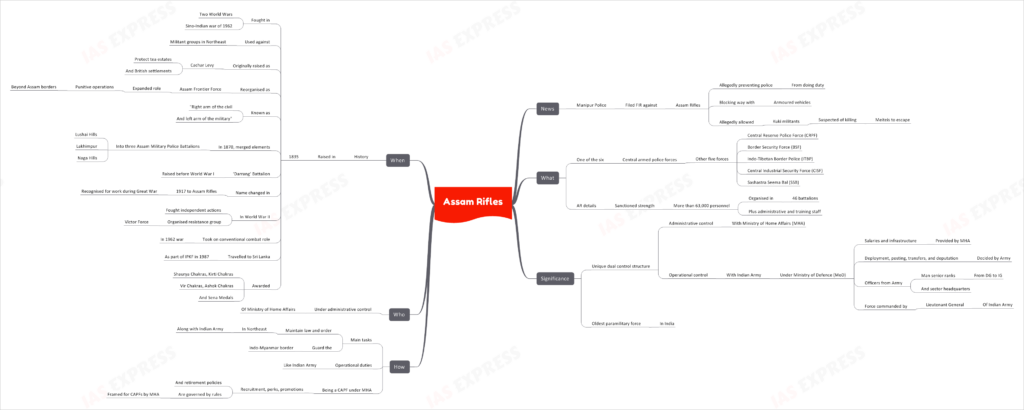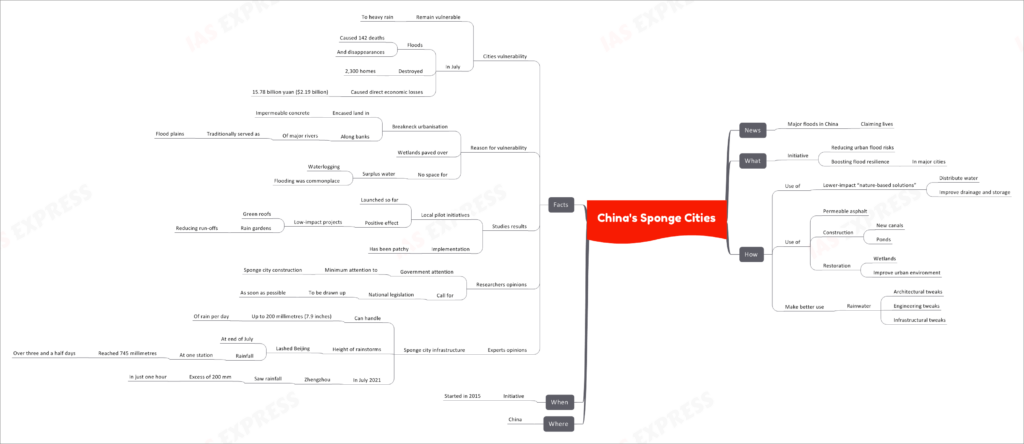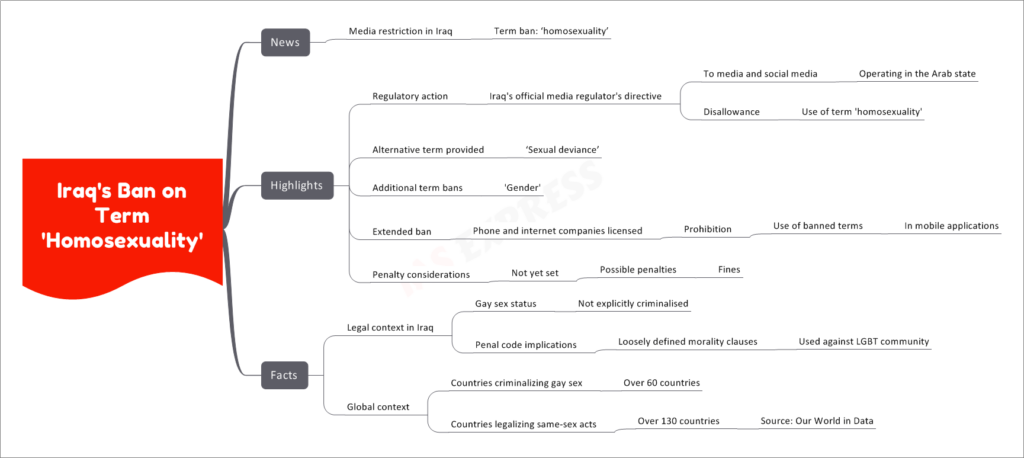[Newsbits] 10.08.2023

Assam Rifles
Recent news of an FIR filed against Assam Rifles by Manipur Police underscores the complexities of its operations. As one of the six central armed police forces in India, Assam Rifles holds a unique dual control structure, carries out crucial tasks in maintaining law and order, and guards the Indo-Myanmar border.
Assam Rifles: An Overview
Assam Rifles is one of India's central armed police forces, with more than 63,000 personnel organized into 46 battalions, along with administrative and training staff. It holds the distinction of being the oldest paramilitary force in India.
Dual Control Structure
Assam Rifles operates under a unique dual control structure:
- Administrative Control: The Ministry of Home Affairs (MHA) oversees administrative matters.
- Operational Control: The Indian Army, under the Ministry of Defence (MoD), manages operational aspects. This includes deployment, posting, transfers, and deputation. Officers from the Indian Army hold senior ranks within Assam Rifles, and the force is commanded by a Lieutenant General of the Indian Army.
Historical Significance
Raised in 1835 as the Cachar Levy to protect tea estates and British settlements, Assam Rifles has played pivotal roles in history, from fighting in World Wars to its involvement in the Sino-Indian war of 1962. Its contributions during conflicts and its reputation earned it the moniker "Right arm of the civil and left arm of the military."
Assam Rifles' Responsibilities
Assam Rifles' main tasks include maintaining law and order in the Northeast region, often collaborating with the Indian Army, and guarding the Indo-Myanmar border. It undertakes operational duties akin to the Indian Army.
Governing Structure
Being a central armed police force under the MHA, Assam Rifles follows recruitment, perks, promotions, and retirement policies governed by rules framed for central armed police forces by the MHA.
China’s Sponge Cities
Recent major floods in China, resulting in tragic loss of lives and destruction, have highlighted the urgent need for innovative strategies to tackle urban flood risks. The "Sponge Cities" initiative, launched in 2015, aims to address this challenge by reducing flood vulnerabilities and boosting resilience in major urban centers across China.
The Sponge Cities Initiative: How it Works
The Sponge Cities initiative employs lower-impact "nature-based solutions" to manage water in urban areas, distributing water, improving drainage, and enhancing storage capabilities. Several techniques are employed to achieve this:
- Permeable Asphalt: The use of permeable asphalt enables rainwater to infiltrate the ground, reducing surface runoff.
- Construction: Construction projects include the creation of new canals and ponds, which help manage excess water during heavy rainfall.
- Restoration: Wetlands are restored, serving as natural buffers against flooding while also contributing to an improved urban environment.
- Rainwater Utilization: Architectural, engineering, and infrastructural tweaks ensure better utilization of rainwater, reducing the strain on drainage systems.
Addressing Vulnerability
China's cities remain vulnerable to heavy rainfall, as seen in recent floods causing significant loss and destruction. This vulnerability is attributed to breakneck urbanization, which has led to the encasement of land in impermeable concrete. Traditional flood plains along major rivers have been developed upon, leaving no space for surplus water, resulting in waterlogging and flooding.
Successful Pilot Initiatives and Implementation Challenges
Local pilot initiatives have demonstrated the positive impact of low-impact projects like green roofs and rain gardens in reducing runoff. However, the implementation of the Sponge Cities initiative has been inconsistent due to various challenges.
Government and Expert Perspectives
Some researchers argue that the government's attention to Sponge City construction has been minimal and call for the formulation of national legislation to address the issue comprehensively. Experts emphasize that Sponge City infrastructure can handle significant rainfall, up to 200 millimeters per day, but extreme rain events like those in Beijing and Zhengzhou in July 2021, which saw rainfall in excess of 200 mm in just an hour, pose considerable challenges.
Link between Nutritional Supplementation and TB Treatment Outcome
Recent pioneering findings have shed light on a crucial connection between nutritional supplementation and the outcomes of tuberculosis (TB) treatment. The results of the RATIONS (Reducing Activation of Tuberculosis by Improvement of Nutritional Status) trial, published in The Lancet, have revealed a strong correlation between nutritional support and improved TB treatment results as well as reduced mortality rates.
The RATIONS Trial and Study Details
The RATIONS trial, a cluster-randomised controlled trial, involved 10,345 household contacts of 2,800 microbiologically confirmed pulmonary TB patients. The study was conducted in the districts of Saraikela-Kharsawan, West Singhbhum, East Singhbhum, and Ranchi in Jharkhand, India, under the National Tuberculosis Elimination Programme (NTEP).
Background and Population Challenges
Jharkhand, being predominantly rural, faces challenges related to its population's high poverty rates, with 25% of its residents belonging to scheduled tribes.
Treatment Approach in the RATIONS Trial
Nutritional Support for TB Patients
- TB patients received nutritional support, including 1,200 kilocalories (kcal), 52 grams of protein daily, and micronutrients for a duration of 6 months.
Household Contacts in the Intervention Group
- The intervention group of household contacts received monthly food rations and micronutrients, providing 750 kcal and 23 grams of protein daily.
Positive Outcomes
The study yielded significant positive outcomes:
- A reduction in TB incidence by 39% for all forms and 48% for microbiologically confirmed pulmonary TB in the intervention group.
- Another study published in The Lancet Global Health observed that weight gain in severely malnourished TB patients in Jharkhand led to a substantial reduction in TB mortality risks.
- This study involved nutritional support for TB drug responders for 6 months and for multidrug-resistant TB patients for 12 months. The support included 1,220 kcal, 52 grams of protein daily, and micronutrient pills. An extension of up to 6 more months was given for patients with a BMI < 18.5 kg/m2 at the end of treatment.
- The study reported that early weight gain in the first two months resulted in a 60% lower TB mortality risk, along with increased treatment success, better weight gain, and low weight loss rates in follow-ups.
- The work ability of patients improved from 3% at enrolment to 75% post-treatment.
- Other observations highlighted low prevalence of HIV, diabetes, and Multi-Drug Resistant-TB, but high usage of alcohol and tobacco. Approximately 10% of patients required inpatient care.
Tuberculosis Risk Factors in India
Undernutrition is the most prevalent risk factor for tuberculosis in India, accounting for over 40% of new cases each year. Other risk factors include diabetes, HIV, smoking, and alcohol consumption. Notably, undernutrition stands out as a significant risk factor.
A past study conducted by the National Institute for Research in Tuberculosis (NIRT) in Chennai revealed that TB patients with a weight below 35 kg had a fourfold higher mortality risk compared to those with a weight exceeding 45 kg.
Iraq’s Ban on Term ‘Homosexuality’
Recent news from Iraq highlights a regulatory action by the country's official media regulator. The directive issued to media and social media platforms operating in Iraq restricts the use of the term 'homosexuality.' This move has raised concerns and sparked discussions about the implications of such restrictions.
Regulatory Action and Term Replacement
The official media regulator in Iraq has taken a regulatory action by instructing media and social media platforms within the Arab state to refrain from using the term 'homosexuality.' Instead, an alternative term, 'sexual deviance,' is provided for use. This directive comes as part of an effort to control the discourse around certain topics in media.
Additional Term Bans and Extended Measures
Apart from the ban on the term 'homosexuality,' the directive also includes a ban on the term 'gender.' Furthermore, this restriction extends to phone and internet companies that are licensed in Iraq, prohibiting the use of these banned terms within mobile applications.
Penalty Considerations
While the specific penalties for violating these term bans have not been set yet, there is speculation that fines could be imposed for non-compliance. The potential fines would reflect the seriousness of the restrictions and their enforcement.
Legal Context in Iraq
Status of Gay Sex
In Iraq, gay sex is not explicitly criminalized by law. However, the penal code includes loosely defined morality clauses that have historically been used against the LGBT community.
Global Context
Divergent Legal Approaches
In the global context, over 60 countries still criminalize gay sex, creating a hostile environment for LGBT individuals. In contrast, more than 130 countries have legalized same-sex acts, acknowledging the importance of human rights and inclusivity.
SuSwagatam Portal
On August 10, the Supreme Court of India announced the launch of the 'SuSwagatam' portal, a digital initiative aimed at streamlining access for advocates, visitors, interns, and others wishing to enter the apex court. This web-based and mobile-friendly application is set to revolutionize the entry pass system and enhance the overall visitor experience.
Portal's Purpose and Features
The primary purpose of the SuSwagatam portal is to facilitate hassle-free registration and issuance of e-passes for individuals intending to enter the Supreme Court. The portal is designed to serve a diverse range of users, including advocates, visitors, interns, and more. It acts as a one-stop platform for acquiring necessary entry permits and streamlines the entire process.
Advantages and Significance
Eliminating Long Queues
One of the most notable advantages of the SuSwagatam portal is its ability to eliminate the need for individuals to stand in long queues for obtaining entry passes. This digital transformation is set to significantly reduce the waiting times and frustration associated with physical pass collection.
Time Conservation
By transitioning to a web-based application, the SuSwagatam portal not only modernizes the entry pass system but also conserves the valuable time of advocates, visitors, and others. This efficient process allows users to secure their entry passes with minimal effort and time investment.
Implementation Timeline and Feedback
Pilot Testing and Positive Feedback
The SuSwagatam portal underwent pilot testing from July 25, 2023. The initial feedback received from users has been overwhelmingly positive, highlighting the user-friendly interface and the convenience it offers.
Usage Data
As of August 9, the portal has issued over 10,000 e-passes on a pilot basis. This uptake clearly demonstrates the effectiveness of the portal in serving its intended purpose and catering to the needs of its diverse user base.
The Chief Election Commissioner and other Election Commissioners (Appointment Conditions of Service and Term of Office) Bill
The government's recent listing of the "Chief Election Commissioner and Other Election Commissioners (Appointment Conditions of Service and Term of Office) Bill" for introduction in the Rajya Sabha signifies a crucial step toward safeguarding the autonomy and transparency of the Election Commission of India (ECI). This legislation seeks to regulate the appointment, conditions of service, and term of office for the Chief Election Commissioner (CEC) and other Election Commissioners.
Purpose of the Legislation
The main objectives of the bill are to establish a clear and transparent procedure for the appointment, service conditions, and tenure of the Chief Election Commissioner and other Election Commissioners. It aims to ensure that the appointments are conducted in a manner that upholds integrity, knowledge, and experience related to the management and conduct of elections.
Key Highlights
Composition of the ECI
- The Chief Election Commissioner and other Election Commissioners must fulfill certain criteria to be eligible, including having held posts equivalent to the secretary to the Government of India, displaying integrity, and possessing knowledge and experience in election management.
Search Committee and Selection Process
- The Search Committee, led by the Cabinet Secretary, plays a pivotal role in preparing a panel of five eligible candidates.
- The Selection Committee, comprising the Prime Minister, Leader of Opposition in Lok Sabha, and a Cabinet minister nominated by the Prime Minister, is tasked with selecting ECI members. The appointment remains valid even in the presence of vacancies or defects in the committee's composition.
- The process is transparent and can consider candidates beyond the panel prepared by the Search Committee.
Terms and Salary
- The Chief Election Commissioner and other Election Commissioners will serve a term of six years or until the age of 65, whichever is earlier.
- Their salary will be equivalent to that of the Cabinet Secretary.
Bill's Purpose and Impact
- The bill sets up a systematic procedure for the conduct of ECI's business.
- It repeals the Election Commission (Conditions of Service of Election Commissioners and Transaction of Business) Act, 1991, and introduces new business rules aligned with the new Act once passed.
- The transaction of business is aimed at achieving unanimity whenever possible, but in cases of differing opinions, the majority's viewpoint prevails.
Significance
Upholding Supreme Court Verdict
- The bill follows a Supreme Court verdict from March, which aimed to insulate appointments from executive interference.
- The verdict ruled that appointments should be made by the President based on the advice of a Committee consisting of the Prime Minister, Leader of Opposition in Lok Sabha, and Chief Justice of India.
Addressing Vacancies
- The upcoming vacancy in the poll panel, with Election Commissioner Anup Chandra Pandey retiring on February 14 at the age of 65, could influence the timing of the appointment.
- This comes just before the likely announcement of the schedule for the 2024 Lok Sabha polls, following a pattern of past parliamentary election announcements in March.
Current Appointment System
- The CEC and ECs are currently appointed by the government under Article 324(2) of the Constitution.
- The Election Commission composition consists of the Chief Election Commissioner and a number of other Election Commissioners fixed by the President.
- The President appoints the CEC and ECs, subject to provisions of law made by the Parliament.
Keralam
In recent news, the Kerala Assembly has made a significant move by passing a resolution to rename the state within the Constitution and all official records. This decision has brought attention to the historical context, the process of renaming, and the implications of this change.
Kerala Assembly's Resolution for Renaming
The Resolution Details
- The proposed new name in Malayalam: Keralam
- The history of state formation based on language, with the date of November 1, 1956, also celebrated as Kerala Formation Day.
- The demand for a united Kerala for Malayalam-speaking communities, rooted in the freedom struggle.
- The current state name, Kerala, is mentioned in the first Schedule of the Constitution.
- The Assembly's request to the Union Government for immediate action under Article 3 of the Constitution to change the state's name to Keralam.
The Process of Renaming
Renaming Cities vs. States
- Renaming a state involves steps such as obtaining approval from the Centre's Ministry of Home Affairs (MHA) and necessitates a constitutional amendment.
- Unlike renaming cities, which typically involves local authorities, state renaming requires higher-level consent and legal adjustments.
The Proposal Process
- The proposal originates from the state government, reflecting the people's sentiment.
- The Union Ministry of Home Affairs (MHA) steps in to oversee the process.
- MHA gives consent after receiving No Objection Certificates (NOCs) from various agencies including the Ministry of Railways, Intelligence Bureau, Department of Posts, Survey of India, and Registrar General of India.
Implementation of Proposal
- If the proposal is accepted, it is introduced as a Bill in Parliament.
- Upon becoming a law, the state's name is officially changed to the proposed name, in this case, Keralam.
Facts About Kerala and Its Name
Origin of the Name 'Kerala'
- The name 'Kerala' finds its earliest record in Asoka’s Rock Edict II dating back to 257 BC.
- The inscription refers to a local ruler as "Keralaputra," which translates to "son of Kerala" or "son of Chera," indicating the Chera dynasty's influence.
About the Term 'Keralam'
- The term 'Keralam' may have originated from 'Cheram,' with 'keram' being Canarese (Kannada) for 'cheram.'
- Keralam is described as the region between Gokarnam and Kanyakumari.
- The term possibly roots from 'cher,' meaning 'to join,' resulting in the compound word 'Cheralam,' signifying a connected region or land.
The Evolution of Kerala as a Separate State
Early Movements for a Unified Kerala
- In the 1920s, the Aikya Kerala movement emerged, demanding a separate state for Malayalam-speaking people.
- The movement aimed at integrating the princely states of Malabar, Kochi, and Travancore.
Post-Independence Integration
- After independence, there was a merger and integration of princely states.
- A significant step was taken on July 1, 1949, with the formation of the Travancore-Cochin State through the integration of Travancore and Kochi.
State Reorganisation Commission's Recommendations
- The State Reorganisation Commission, led by Syed Fazl Ali, recommended the creation of the state of Kerala.
- This included the inclusion of the district of Malabar and the Kasargod taluk, while excluding certain taluks and parts of Shenkottai.
Formation of Kerala State
- The state of Kerala was officially formed on November 1, 1956, with the name 'Keralam' in Malayalam and 'Kerala' in English, as we know it today.







